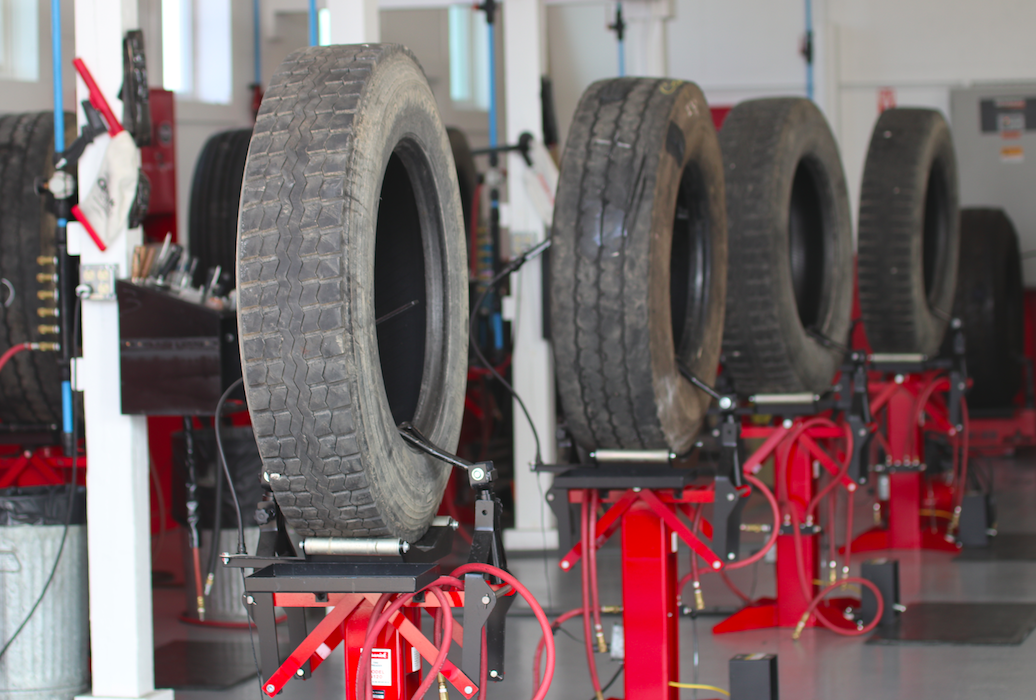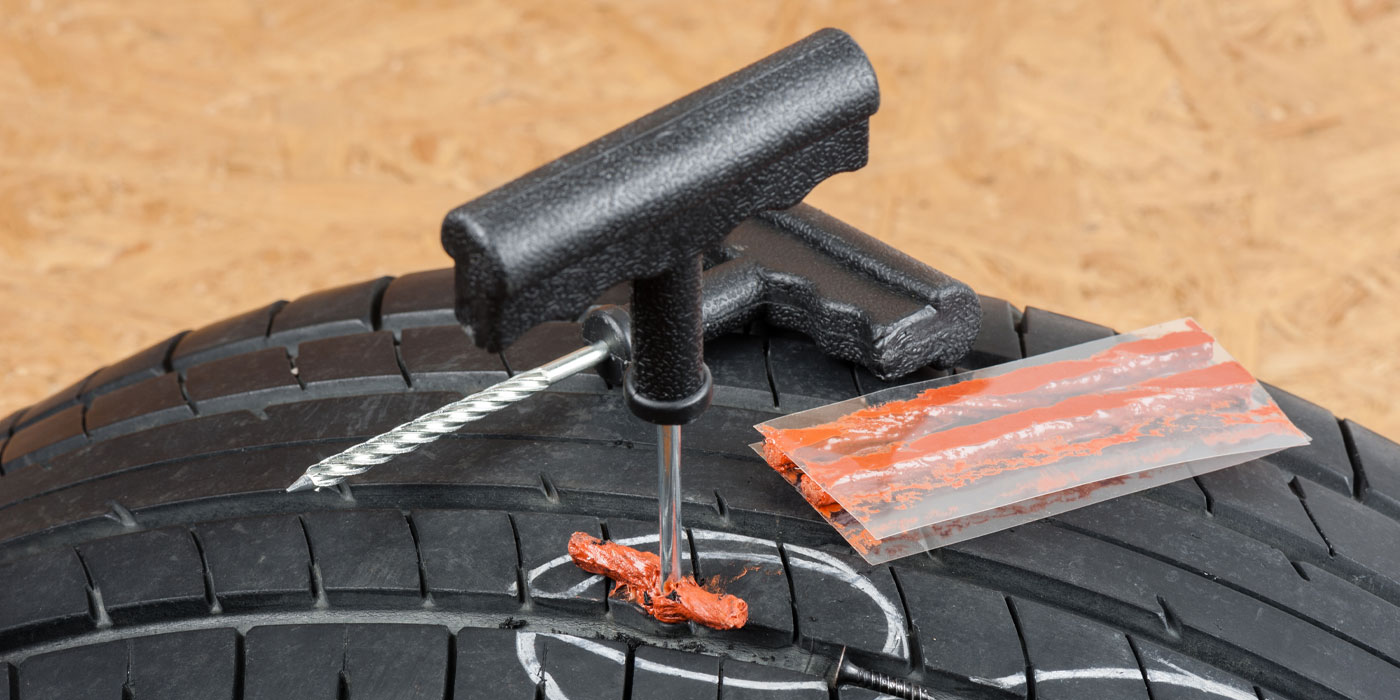Tire Tracks Morris IL: Best Tires and Providers
Tire Tracks Morris IL: Best Tires and Providers
Blog Article
Professional Guide to Tire Repair Work: Whatever You Required to Know
In this extensive overview, we will untangle the intricacies of tire repair, dropping light on the different types of repair service packages readily available and offering beneficial insights into when it might be time to bid goodbye to a worn-out tire. Stay tuned as we dig much deeper into the subtleties of tire maintenance, furnishing you with the vital knowledge to ensure your tires stand the examination of time.
Common Reasons of Tire Damages
What are the usual reasons that result in tire damages, affecting automobile performance and safety? Tire damage can take place due to numerous elements, with one of the primary reasons being incorrect rising cost of living pressure. Under-inflated tires can cause too much warmth buildup, causing increased wear and possible blowouts. Alternatively, over-inflated tires can result in minimized traction, irregular wear, and a harsher trip.

One more usual source of tire damage is poor tread depth. Damaged treads can jeopardize grasp on the roadway, especially in wet or unsafe problems, enhancing the threat of crashes. In addition, driving over pockets, particles, or sharp things can pierce or trigger cuts in the tire, compromising its structure and possibly causing a level.
Moreover, improper wheel placement and unbalanced tires can additionally add to tire damage. Misaligned wheels can result in uneven wear patterns, while out of balance tires can trigger resonances, affecting both the lorry's handling and the tire's durability. Regular upkeep checks and timely repair work can help alleviate these usual reasons for tire damages, making sure optimum automobile performance and safety and security.
Kinds Of Tire Repair Packages
To address the results of usual sources of tire damage talked about earlier, it is important to understand the different kinds of tire repair work packages offered for automobile proprietors. There are mostly 3 kinds of tire fixing kits typically used: plug kits, patch kits, and combination repair packages.
Plug packages are a fast and simple remedy for repairing little leaks brought on by nails or screws. They include a T-handle tool and rubber plugs that can be inserted into the slit to seal the hole properly. Spot sets, on the various other hand, are preferable for bigger slits or cuts in the tire. These sets include a spot and adhesive material that is related to the internal lining of the tire to cover the broken location firmly.
Combination repair service sets supply the advantage of having both plug and spot components, offering an extensive service for a selection of tire damages scenarios. It is very important for lorry owners to acquaint themselves with these different sorts of tire repair service packages to be planned for any kind of unanticipated tire problems on the roadway.

Steps to Fix a Tire Slit
Repairing a tire slit calls for an organized strategy and the right devices check out here to ensure a safe and efficient option. When confronted with a punctured tire, the primary step is to safely pull over to a flat, stable surface area away from website traffic. Engage the emergency brake and location wheel chocks behind the tires to stop any kind of accidental rolling. Next off, get rid of the punctured tire adhering to the car manufacturer's standards. As soon as the tire is gotten rid of, inspect the pierced area to locate the foreign things creating the leakage. Utilize a reaming tool to clean and rough up the slit hole for far better attachment. Apply rubber cement to the area and insert a plug utilizing a plug insertion tool. Trim any kind of excess plug material flush with the tire step. Reinflate the tire to the suggested pressure and re-install it onto the car. Conduct a detailed leakage check using soapy water to ensure the leak is successfully secured before returning to typical driving.
When to Change a Tire
Identifying the appropriate time for tire replacement demands a complete evaluation of various key aspects connected to tire wear and safety. As tires put on down, the deepness of the tread declines, influencing the tire's hold on the road. Even if the tread depth appears sufficient, tires older than 6 years should be carefully checked out, as you can find out more the rubber can degrade over time, making the tire much more prone to failing.

Tire Maintenance Tips for Durability
After assessing vital elements connected to tire wear and safety, applying correct tire upkeep methods is vital for making best use of the longevity of your tires. Routinely checking tire stress is critical, as underinflated tires can lead to boosted wear and lowered gas performance.
Revolving your tires at regular periods, usually every 5,000 to 7,000 miles, promotes even tread wear throughout all tires. This method extends the life of your tires and ensures optimal efficiency. Examining tires for signs of damages, such as cuts, protrudes, or leaks, is also vital for preserving tire longevity. Last but not least, driving behaviors play a considerable role in tire wear. Preventing sudden stops, sharp turns, and extreme speeding can assist preserve your tires and enhance security on the road. By following these tire upkeep tips, you can take full advantage of the life expectancy of your tires click this link and guarantee a smooth driving experience (tire shop near me).
Final Thought
To conclude, understanding usual root causes of tire damages, utilizing the appropriate tire repair kits, adhering to correct steps to repair a tire puncture, understanding when to replace a tire, and carrying out tire maintenance pointers are necessary for making the most of the long life of your tires. By remaining notified and proactive in dealing with tire problems, you can make sure safety and security when traveling and prolong the life-span of your tires.
Report this page